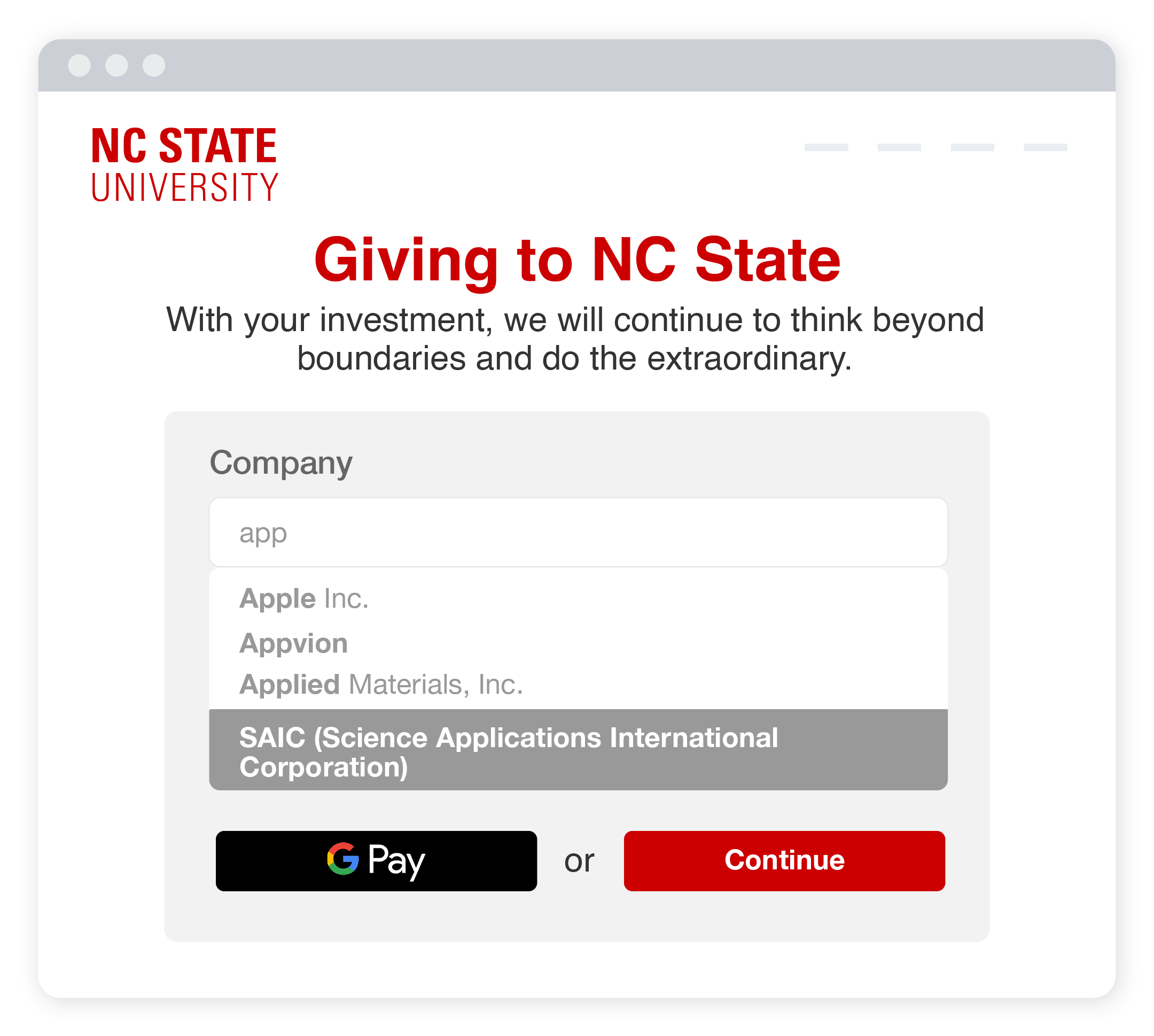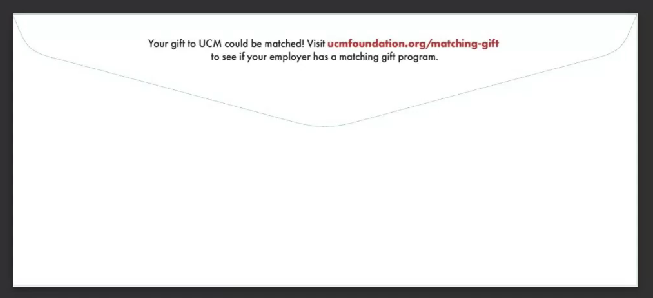How Higher Ed Leaders Leverage Matching Gifts for Success
In today’s competitive fundraising landscape, colleges and universities are under increasing pressure to maximize every donation opportunity. One of the most effective—and often underutilized—tools in a university’s fundraising toolkit is matching gifts. If you’re wondering how higher ed leaders leverage matching gifts for success, you’ve come to the right place.
In a recent webinar focused on unlocking the power of corporate matching, expert higher ed fundraising professionals came together to share their strategies, experiences, and real-world success stories. We spoke with schools of differing sizes and from various regions across the nation—and though each is different, there are some consistencies that we continue to see drive success. From innovative campaign ideas to practical tips on donor engagement, the conversation was packed with actionable insights for advancement teams looking to make the most of matching gift opportunities.
In this recap, we’ll highlight key takeaways from the session and explore specific tips institutions are using to make matching gifts a powerful driver for fundraising growth and alumni engagement. Let’s begin!
Tip #1: Highlight matching gifts during the giving flow.
One of the simplest yet most effective ways higher ed institutions can boost matching gift revenue is by integrating matching gift prompts directly into the giving experience. When donors are already in the mindset of giving, that’s the perfect moment to introduce the possibility of doubling—or even tripling—their impact.
By including a brief note or checkbox during the donation process that asks if the donor’s employer offers a matching gift program, institutions can capture donor attention at a critical point of engagement. Some platforms even allow real-time employer lookup tools that instantly tell a donor whether their company has a matching gift program and how to take the next step.
Higher ed leaders who have implemented this approach have seen a significant lift in matching gift submissions and completions. It’s a small tweak that can lead to big results, especially when scaled across multiple giving forms and thousands of alumni and supporters.
Tip #2: Establish a matching gift web page.
Creating a dedicated matching gift web page is a foundational best practice for higher ed institutions aiming to drive more matching gift revenue through their websites. After all, this centralized hub serves as both an educational resource and a call to action—guiding donors through the process of checking their eligibility and submitting a match request with ease.
A well-designed matching gift page should clearly explain what matching gifts are, how the process works, and why they matter. It should also feature an employer search tool so donors can quickly see if their company participates in a matching gift program and access the relevant forms and guidelines.
Once established, you’ll want to promote this page across your giving campaigns, email communications, social media, donor acknowledgments, and beyond. The more visible it is, the more likely donors are to take action.
Tip #3: Automate email reminders.
Even the most well-intentioned donors can forget to follow through on a matching gift submission. That’s where automated email reminders come in. By setting up timely, personalized follow-up emails (through Double the Donation or otherwise), institutions can gently nudge donors to take that next step and complete their match request.
These reminders are most effective when sent shortly after the donation while the gift is still fresh in the donor’s mind. Including clear instructions, a link to your matching gift page, and a reminder of their employer’s matching policy can significantly increase conversion rates—and matching gift software makes it easy to do.
Tip #4: Utilize domain exclusions.
Unfortunately, not every donor is eligible for a corporate matching gift—and in the case of higher education, that sometimes includes faculty and staff who work at the institution itself. To avoid confusion (and potential donor fatigue), higher ed leaders report that it’s smart to set up domain exclusions that filter out known ineligible email addresses from matching gift communications.
By excluding domains like “@university.edu” from your automated matching gift outreach (which is easy to do with Double the Donation), you ensure that employees aren’t receiving irrelevant prompts to submit a match they can’t actually request. This small adjustment can improve the donor experience, reduce unnecessary email volume, and help maintain trust and credibility in your communications.
The result? A cleaner, more targeted strategy that focuses your outreach on the donors who are most likely to convert while respecting the time and inboxes of those who aren’t eligible.
Tip #5: Send emails from a real person.
When it comes to donor communications, authenticity matters—and that includes your matching gift outreach. One of the simplest ways to boost engagement and trust is by sending your emails from a real person, using your institution’s email domain instead of a generic or third-party address.
Emails that come from a recognizable name—like a development officer, alumni relations manager, or matching gift coordinator—tend to feel more personal and credible. As a result, they’re more likely to be opened, read, and acted upon. After all, donors are going to be far more receptive to a message from “Jessica at University Advancement” than from “no-reply@matchinggifts.com.”
Many higher ed teams even create custom signatures and headshots in their automated messages to give them a warm, human touch. It’s a small detail that can lead to a big difference in donor response—and ultimately, more matching gift revenue.
Tip #6: Centralize your matching gift team.
Matching gifts touch many parts of a higher ed advancement office—from annual giving and alumni relations to donor services and corporate partnerships. Without a centralized approach, efforts can become fragmented, leading to missed opportunities, inconsistent follow-up, and inefficient workflows. That’s why one of the most impactful strategies is to centralize your matching gift efforts under a designated team or point person.
By consolidating responsibility, your institution can streamline processes, maintain consistent messaging, and better track match-related metrics. A centralized team can oversee everything from matching gift promotion and donor communication to tracking submissions and reconciling funds.
Tip #7: Create a matching gift marketing video.
Sometimes, a video can do more to inspire action than a full page of text—and that’s especially true when it comes to educating donors about matching gifts. Creating a simple yet engaging matching gift marketing video is a powerful way to increase awareness and drive submissions.
In our recent webinar, UCM shared that they were able to produce a matching gift explainer video, which can be viewed here, in under thirty minutes using free or low-cost tools (hint: Canva for Nonprofits). The video walked donors through what matching gifts are, how the process works, and where to check if their employer participates. It was short, straightforward, and most importantly—effective.
The beauty of video is its versatility. You can embed it on your giving page, feature it in email campaigns, post it on social media, and even include it in thank-you messages. It puts a human face (and voice!) to the process and helps remove confusion or hesitation donors might have.
Tip #8: Follow up after key campaign efforts.
Following major fundraising campaigns, such as Giving Tuesday or other Giving Day events, donors are often feeling generous and engaged—but that doesn’t mean the work is over. In fact, these campaigns offer an excellent opportunity to boost matching gift submissions with timely follow-up reminders.
College of the Holy Cross shared that reaching out after key giving events is essential for maximizing the impact of each donation you receive. Many donors may forget to check for matching gift opportunities in the excitement of the moment, or they might not even be aware that matching gifts exist at all. By sending a targeted reminder shortly after the event, you can gently nudge donors to take action and ultimately double their impact.
Tip #9: Send a matching gift reminder with your gift receipts.
Acknowledging a donor’s gift is an important step in donor stewardship, but it’s also a great opportunity to remind them about the possibility of matching gifts. Including a matching gift reminder alongside your gift receipts ensures that donors are aware of this opportunity and can take action even after their donation has been processed.
For instance, UCM effectively included a brief note about matching gifts on their acknowledgment envelopes. This small but impactful detail serves as a gentle nudge, reminding donors that their employers may be willing to match their contributions, thus increasing the overall impact of their gift.
Tip #10: Add a P.S. section about matching gifts to your appeals.
Sometimes, the simplest messaging can be the most effective—especially when it’s placed where donors are most likely to see it. Adding a P.S. section about matching gifts at the end of your appeal letters or emails is a great way to boost awareness and encourage donors to take action.
Why? The P.S. section is one of the most-read parts of any communication. It’s often where donors look for a quick takeaway, especially if they’re skimming your message. By including a brief, compelling reminder about matching gifts—such as, “P.S. Did you know that your employer may double your gift? Visit our matching gift page to find out how you can make an even bigger impact!”—you’re giving them an easy-to-spot reason to follow through.
This tactic works well in both print and digital appeals. In printed letters, a P.S. section provides a short, punchy reminder that stands out. In digital appeals, you can even link the P.S. to your matching gift page for easy access.
Tip #11: Credit matches to the original donor.
When a matching gift comes through, it’s not just a financial win—it’s also a recognition opportunity. However, how that match is credited to your CRM can make a big difference in donor stewardship, tracking, and reporting. To ensure donors feel the full impact of their generosity, it’s best to credit the matching gift company while providing a soft credit to the original donor.
This approach keeps your records clean and accurate—acknowledging the source of the funds while still tying the gift back to the individual who initiated it. Soft credits allow you to link the match to the donor’s record, which is helpful for donor recognition, giving totals, and long-term engagement.
Tip #12: Expand into volunteer matching opportunities.
For many companies, matching gifts aren’t limited to monetary donations—they can also extend to volunteer hours, too. In fact, tens of thousands of employers offer volunteer matching programs, where they’ll provide a donation based on the number of hours their employees volunteer with eligible nonprofits and schools.
By expanding your matching gift strategy to include volunteer hours, you unlock a whole new avenue of potential funding.
A great way to integrate this into your efforts is by including volunteer matching opportunities in your communication channels—whether it’s on your matching gift webpage, in email campaigns, or on social media.
For example, an email campaign could emphasize, “Not only can your gift be matched, but your volunteer hours may also count towards additional funding for our programs.” This taps into the philanthropic mindset of supporters who are already giving their time to the university, allowing them to make an even greater impact.
Wrapping up & webinar replay
As institutions look for innovative ways to stretch their fundraising efforts further, matching gifts offer a strategic advantage that can’t be ignored. By building awareness, streamlining the matching process, and fostering strong partnerships with corporate sponsors, higher ed leaders are not only increasing donations but also deepening their connections with donors.
When executed thoughtfully, matching gifts can become a cornerstone of a successful fundraising strategy—turning every dollar into a lasting investment in the future of education.
Looking for even more matching gift tips and tricks? Register now to watch the full webinar replay:









